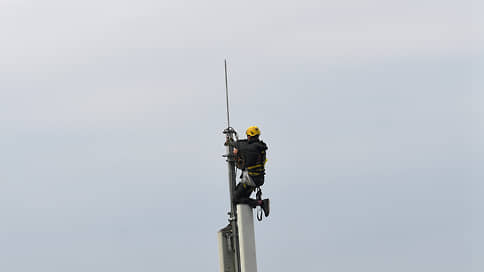Operators have made it easier to share frequencies in the 3G communication standard
[ad_1]

The State Commission on Radio Frequencies has simplified the procedure for sharing frequencies in the 3G communication standard between telecom operators. This will allow companies to more actively develop sharing in this standard, transferring part of the frequencies for 3G to the more popular LTE standard. Experts suggest that frequency sharing for 3G can actively develop in settlements with a small number of people, since the network load is small, and operators use this technology mainly to transmit voice calls.
“Kommersant” got acquainted with the decision of the SCRF dated December 27, 2023, published on the website of the Ministry of Digital Development on January 15. It follows from it that the commission has simplified the procedure for sharing (joint use) of frequencies allocated for the 3G communication standard (UMTS) on the territory of the Russian Federation, with the exception of Crimea and Sevastopol. Now operators will be able to share the frequencies 880–890 MHz, 925–935 MHz, 890–915 MHz, 935–960 MHz, 1920–1980 MHz, 2010–2025 MHz and 2110–2170 MHz without obtaining separate commission permits, subject to compliance with technical specifications radio-electronic means.
Now companies must obtain a separate permit from the SCRF when sharing frequencies, which complicates and extends the procedure over time. Now operators will be able to quickly and easily agree among themselves on the terms of sharing, explains Sergei Polovnikov, head of Content Review. This clause simplifies the procedure for agreeing on the sharing of frequencies and will facilitate interaction between telecom operators, a MegaFon representative told Kommersant.
A source at one operator says that the current solution combines several old technical neutrality solutions into one: “These frequency bands can be shared and used for LTE. This is not forced, but at the request of the operators.” Now, he clarifies, the procedure for obtaining such permits will be simplified, and the load on the SCRF apparatus will decrease. Tele2, MTS and VimpelCom did not provide comments.
Alexey Boyko, an analyst on the Telegram channel abloud62, recalls that sharing frequencies in 3G 2100 MHz networks has already lost its relevance: “Operators are actively refarming this range for LTE 2100. But operators do sometimes share frequencies in LTE networks. One of the directions is sharing 800 MHz frequencies in the Moscow metro.”
Mr. Boyko adds that most often in Russia there is sharing of passive infrastructure, when equipment from another or other telecom operators is installed on a tower or support built by one telecom operator. Recently, this approach has been actively used to eliminate the digital divide (the federal program of the Ministry of Digital Development and Rostelecom, designed until 2023, to provide small and remote settlements with the Internet) – for example, MegaFon equipment is installed on the supports of Rostelecom.
As Alexey Slukin, editor of the profile Telegram channel Telekommunalka, suggests, the initiative will simplify the sharing procedure in the 3G standard, allowing in the future to transfer (refarm) part of the frequencies allocated for this standard to the LTE (4G) standard, maintaining mobile Internet speeds at a high level . “It is profitable to do this in commercially uninteresting locations, for example, in settlements with a small number of people, since the network load is low,” he noted.
This trend is confirmed by a Kommersant source in one of the large operators: “This is a movement both towards frequency sharing and towards technical neutrality. In the next three to five years, there will be a abandonment of the UMTS standard with low mobile Internet speeds in favor of new generations with higher speeds.”
“If operators now begin to share 3G more actively, then all together they will be able to move voice communications there, and focus on LTE for data transmission,” says Sergei Polovnikov. As the expert noted, VoLTE (voice transmission over the LTE standard) is promoted by operators, but few subscribers use it. An interlocutor familiar with the procedure for supplying telecom equipment to the Russian Federation agrees that operators will have to transfer voice communications to 3G and transfer part of the frequencies allocated for the standard to LTE. In his opinion, 3G sharing will also preserve the functionality of telematics tools (sensors, meters, smart city devices), which work for different operators in this standard.
[ad_2]
Source link





